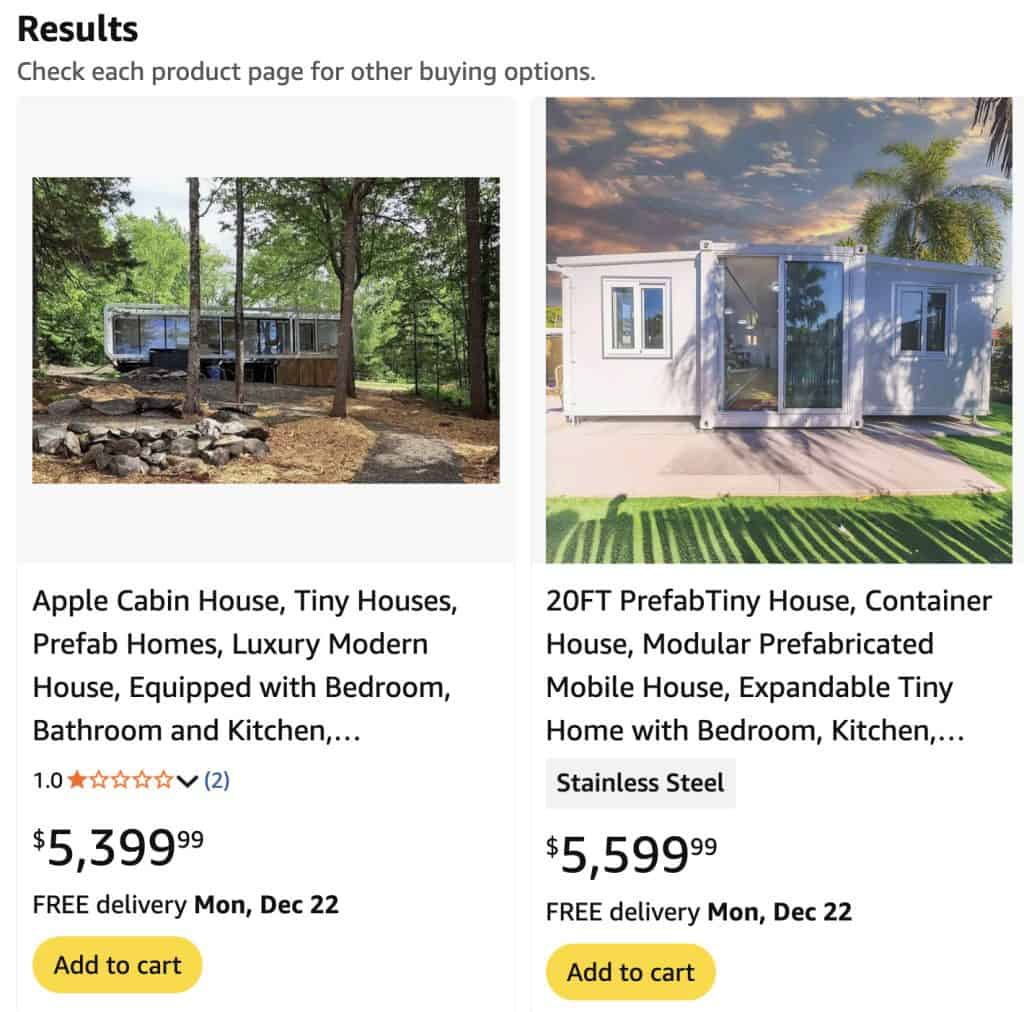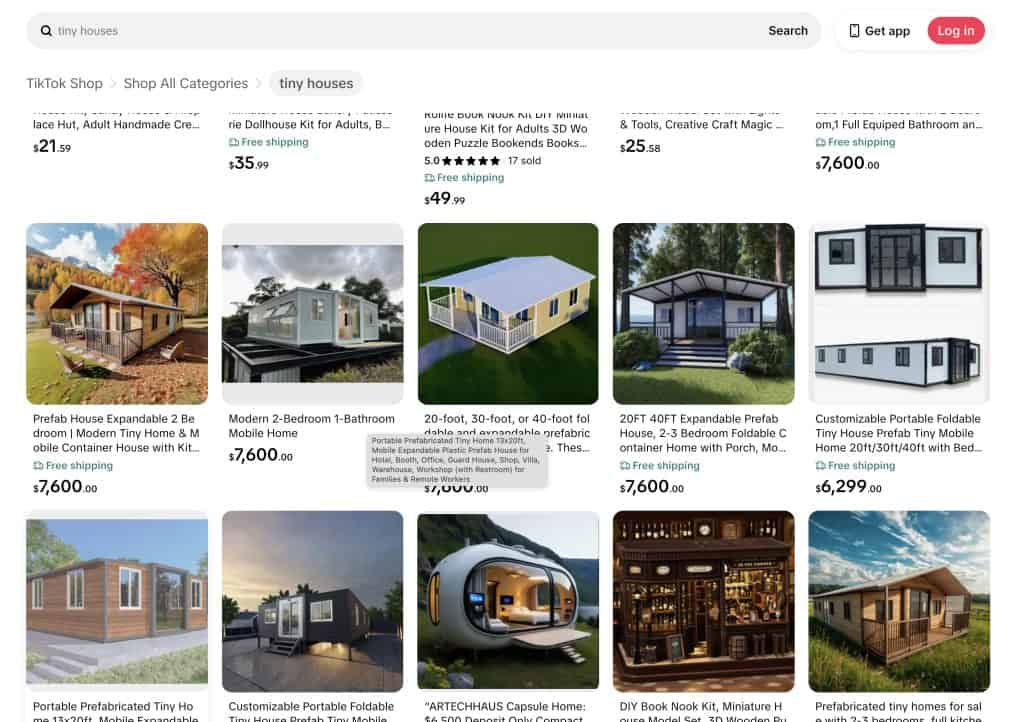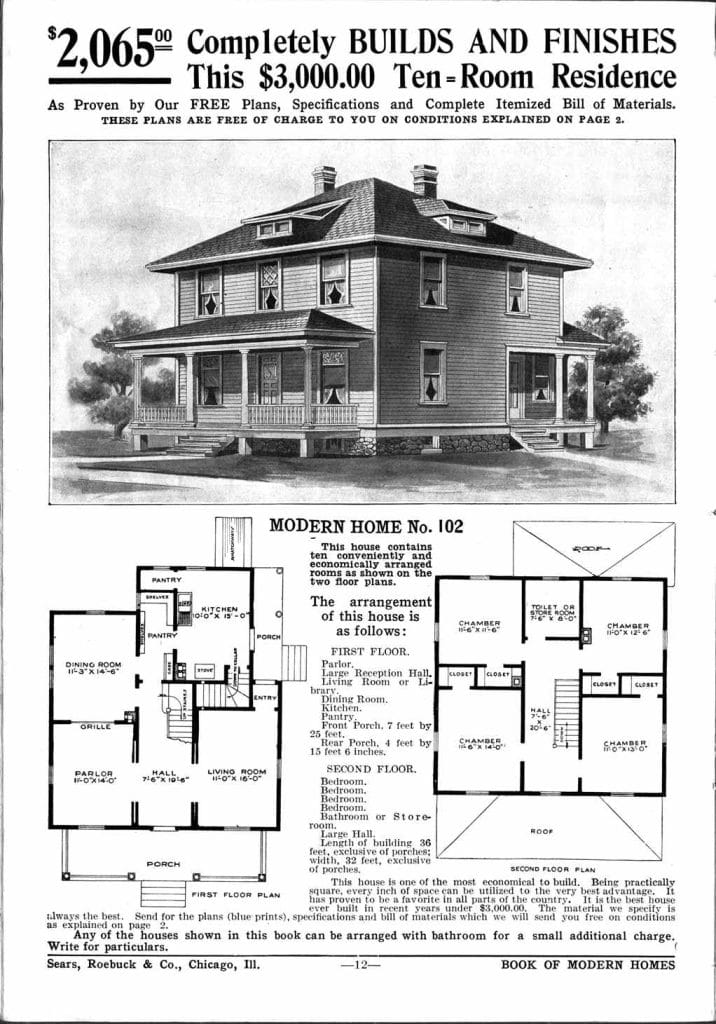Tiny homes were supposed to be simple and affordable.
But now? Some cost as much as a traditional house — and some “tiny home communities” charge luxury-level lot rents.
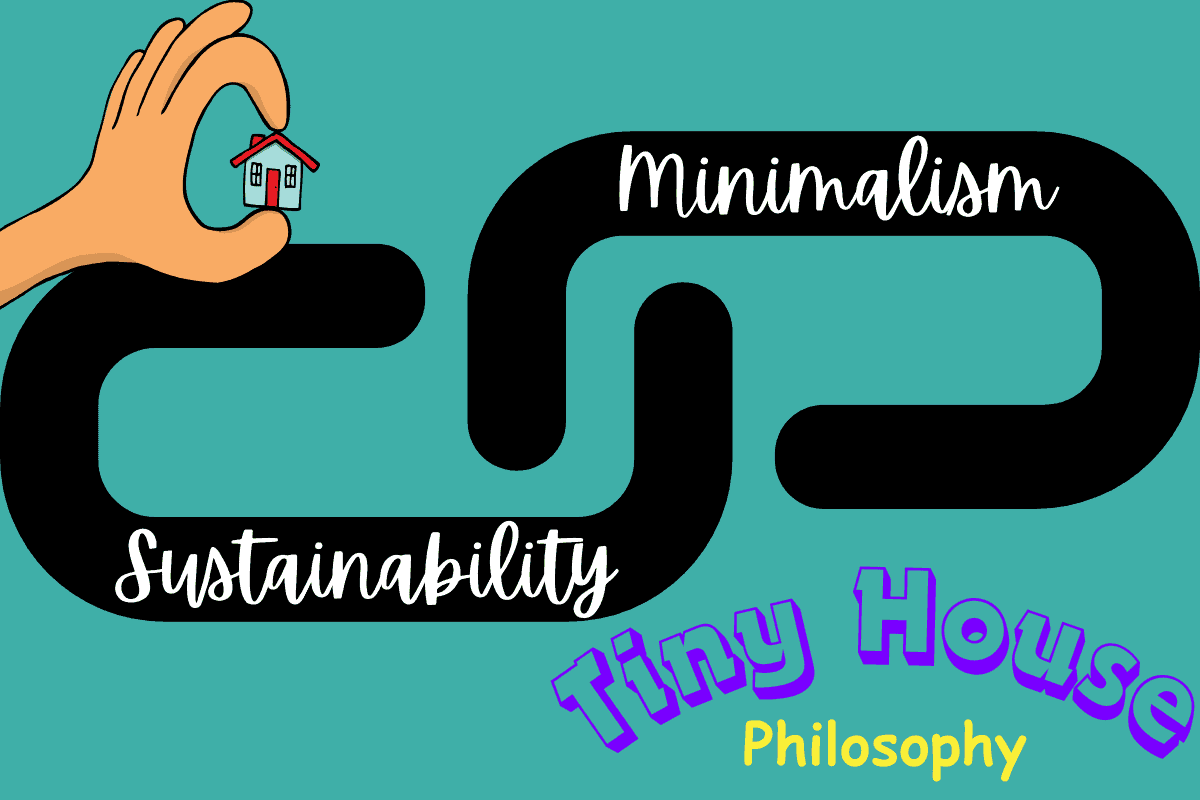
It leaves you asking yourself, “Why Tiny Homes are so Expensive.”
And let’s talk about those “$10,000 tiny home” ads all over TikTok and Amazon — the ones that are ripping people off.
As someone who’s been advocating for smaller, smarter living, it’s frustrating to watch what started as a path to affordability turn into a market that’s pricing people out.
- Tiny homes started as an affordable movement for freedom and simplicity — but marketing, luxury trends, and regulations drove prices up.
- Modern builds cost $60K–$150K+, often more per square foot than traditional homes due to custom work and specialized materials.
- Hidden costs add up: land, utilities, delivery, and lot rent can easily add $10K–$30K+ to the total.
- Smaller doesn’t mean cheaper — kitchens, bathrooms, and systems are still the most expensive parts.
- Scams are on the rise: beware of fake $10K “tiny homes” sold through TikTok, Amazon, or WhatsApp.
- Affordable builders exist, but they’re harder to find — most don’t have big marketing budgets.
- The future is promising: new tech like 3D printing, SIPs, and modular systems may reduce costs.
- Real affordability requires advocacy — zoning reform, better financing, and awareness will keep the movement accessible.
Disclosure: This post may contain affiliate links, meaning I can earn commissions. If you decide to purchase through my links, it is at no cost to you.
A Look Back: How the Tiny Home Movement Started
Smaller homes have existed for as long as people have been building them.
A century ago, families built what they needed and added on as they could afford it.

In the 1950s, homes started getting bigger.
But by the late 1990s, the modern tiny home movement took shape — born from DIY builders and minimalists who wanted freedom, sustainability, and an escape from massive mortgages.

Early builds were often made with reclaimed materials, sweat equity, and a lot of heart.
There weren’t many regulations then, and some early builds didn’t hold up over time.
You could build a livable tiny home for $20,000–$40,000 — sometimes even less in the beginning.
But it was affordable, creative, and full of purpose.
Then came social media, TV shows, and the rise of influencers. Suddenly, tiny homes weren’t just about simplicity — they became aspirational.
Pinterest-perfect interiors, designer finishes, and “luxury minimalist” branding drove interest (and costs) way up.
Today, tiny homes can still be affordable — but the ones you see most online are usually the expensive, luxury models.
Because simple and practical doesn’t get clicks or make big profits.
Related Articles 📚
How Much does a Tiny Home Cost?
The average tiny home today ranges between $60,000 and $125,000, with park models often running $75,000 to $150,000 depending on customization and finishes.
Tiny homes are roughly $300–$500 per square foot, compared to about $150–$250 per square foot for a traditional home.
When you add delivery, setup, and permitting, the total can climb another 15–25%.
Why Tiny Home Prices Keep Climbing
There are real reasons tiny home prices have gone up — but also some that reflect how the market has shifted.
Codes & Compliance
Most builders now follow RVIA, ANSI, or IRC Appendix Q standards.
That’s good for safety and quality — but it adds inspections, certifications, and licensed labor, which all increase cost.

Materials & Labor
The price of lumber, insulation, and windows has risen, and skilled tiny-home builders are in short supply.
Because these homes are so specialized, labor costs more.
Customization
In a tiny home, every inch counts. That means custom cabinetry, space-saving furniture, and creative layouts.
Custom = more time, more skill, more money.
Luxury Creep
Quartz countertops, smart lighting, heated floors, and rooftop decks — all beautiful, but none of it cheap.
Many buyers now expect high-end finishes, and builders meet that demand.
Smaller Homes Don’t Mean Cheaper Homes
A smaller home doesn’t automatically mean a cheaper home. Why?
Because you’re not removing the expensive parts — just the empty ones.
When you downsize, you eliminate bedrooms, hallways, and living space — the cheap square footage.
What stays are the expensive parts:
- The kitchen (appliances, cabinetry, countertops)
- The bathroom (plumbing, tile, ventilation)
- The HVAC, electrical, and insulation systems
So even though a tiny home is smaller, the price per square foot is often higher than a traditional home.
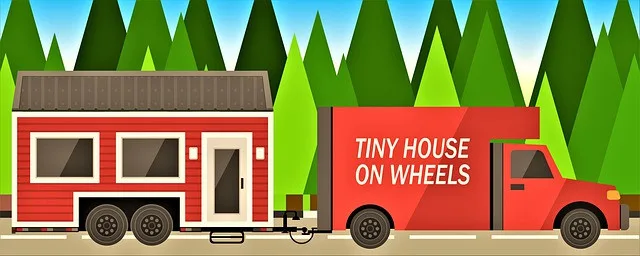
You’re paying for the same core systems — just condensed into a smaller package.
Clearing up confusion on Tiny Homes vs ADUs
Tiny homes and ADUs are often lumped together, but they’re not always treated the same.

ADUs are typically built on permanent foundations and tied to an existing property, which means easier financing but higher permitting costs.
Tiny homes, especially those on wheels, face more zoning hurdles but can offer flexibility for relocation.
Both offer smaller footprints — but very different rules, financing options, and costs.
Related Articles 📚
Why Tiny Homes are so Expensive and Smaller doesn’t mean Cheaper
You can’t just buy a $70,000 tiny home and call it done.
That’s just the starting point.
Land
Buying or renting land — and making sure zoning allows tiny homes — can be a challenge.
Utilities and Site Prep
If you want to hook up to utilities, you’ll likely need septic, water, power, trenching, and pads.
That can easily add $10,000–$20,000.
Delivery
Delivery and setup can add up quickly so get clarity on that cost.
Expect anywhere from $2–$5 per mile, plus extra fees for escort vehicles or site leveling.
Off-Grid Setup
Solar, batteries, and water systems offer freedom — but they’re not cheap.
The up-front investment for off-grid living can easily reach five figures.
Insurance & Financing
Rates depend on whether your home is a park model, THOW, or foundation build.
Financing is limited and often costs more than a traditional mortgage.
Insurance for a tiny home can range from $800 to $1,500 per year, depending on coverage and location.
Communities & Lot Rents
Some tiny home communities now charge $300–$1,200 per month in lot rent.
Amenities like utilities and landscaping might be included, but it’s still a major expense — and some communities aren’t transparent about lot rent increases.
All those items just mentioned should help you understand why tiny homes are so expensive.
Luxury vs. Affordability: Where the Tiny Home Market Is Headed
I see a clear divide emerging:
- The Luxury Lane: Designer models, destination communities, and high-end finishes for those who can afford them.
- The Affordability Lane: Simpler shells, kits, used units, and prefabricated options for those looking to truly live smaller.
Both can coexist, but the original mission — accessible housing — needs a stronger voice.
My Honest Frustration With the tiny Home Industry
Let me be real for a second — I’m frustrated.
The tiny home movement was supposed to make housing more affordable, but somewhere along the way, that mission got buried under noise, marketing, and money.
The loudest voices now?
Luxury brands with massive ad budgets and those sketchy online sellers promising a “tiny home” for $5,000 or $10,000 delivered to your doorstep. (More on those scams in a minute.)
Meanwhile, the real affordable builders — the ones quietly creating solid, simple homes — are harder to find.
They’re too busy working to spend money on flashy ads.
I get it — tiny home builders are running businesses, and profit keeps them alive.
But it’s discouraging watching a movement that started as a solution for affordability drift out of reach for the very people it was meant to help.
Finding an affordable builder is tough.
Finding a prefab option that isn’t priced like a luxury home is tough.
Getting into a community that isn’t full or charging resort-level rent is tough.
Then there’s the flood of AI-generated content online — videos and articles that recycle the same vague information with no real answers.
Here is what I think needs to change:
People need specifics.
Real examples.
Real experiences.
Real humans they can trust.
We need transparency.
We need education.
We need to start real conversations with the people shaping our housing policies so smaller living can actually move forward.
Why Cheap Tiny Homes are a Scam
And then there are the scam marketers — the ones selling a fantasy of “tiny homes” for $5,000–$10,000.
You’ve seen the ads on Amazon, Tik-Tok and Facebook: “Order your tiny home for $5,000!” or “Message us on WhatsApp to buy direct!”
- Tiny Homes for Sale on Amazon
- Tiny Homes for Sale on Tik Tok
Let me be clear — no legitimate builder will ask you to buy through WhatsApp.
These scammers are making a fortune preying on people who just want affordable housing.
If it sounds too good to be true… it is.
They’re selling sheds, empty containers, or nothing at all — and I hate seeing good people get ripped off.
A real, code-compliant, livable home with plumbing, HVAC, and insulation cannot be built and delivered for $5,000.
That was only possible when Sears did it.
What the Industry Needs to Change
Despite the frustrations, I’m hopeful.
The industry is evolving — and I’m seeing positive signs.
- More states are adopting friendlier zoning for ADUs, park models, and tiny homes — especially in places like California, Oregon, Maine, and Colorado, where housing reform is driving change.
- Builders are experimenting with new materials like SIPs (structural insulated panels), 3D-printed components, and prefabricated modular systems that reduce waste and labor.
- Sustainable materials like recycled composites and hempcrete are becoming more mainstream, offering better insulation and lower costs over time.
- Lending options are slowly improving, giving buyers more paths to ownership.
Public perception is also shifting — younger buyers and retirees alike are realizing that “more square footage” doesn’t always equal “more life.”
It’s not an overnight fix, but it’s movement in the right direction — toward smaller, safer, more attainable housing.
How to Make Tiny Living More Affordable
If you’re considering a tiny home, here are a few ways to save without cutting corners:
- Shop used park models or pre-owned tiny homes from reputable resellers.
- Buy a shell and finish it over time — DIY paint, trim, and fixtures can save thousands.
- Simplify design: Fewer angles, fewer custom built-ins, and standard windows/doors cut costs dramatically.
- Use durable, not designer materials: Vinyl plank floors, laminate counters, fiberglass showers.
- Think creatively: Repurpose, reuse, and upcycle whenever possible.
- Look beyond the label: Small cabins, park models, or even finished sheds can function like tiny homes.
- Research land carefully: Family land or rural parcels often have fewer restrictions and lower costs.
- Advocate for change: Support zoning reform so smaller homes are legally allowed in more places.
Final Thoughts on Why Tiny Homes Are So Expensive
Tiny homes took off because people wanted freedom — less debt, less house, more life.
But popularity drove prices up, and affordability slipped away.
That doesn’t mean the dream is gone.
If we stay practical, ask questions, and push for smarter policies, tiny living can still be attainable — without luxury prices.
I started advocating for smaller spaces because I believe housing should be attainable — not just aspirational.
The dream of tiny living is still alive, but it’s going to take awareness, smarter policies, and honest conversations to keep it within reach.
Frequently Asked Questions
Why are tiny homes so expensive if they’re smaller?
Because they still include all the costly parts — kitchens, bathrooms, HVAC — just in a smaller footprint.
Do tiny homes cost more per square foot than regular houses?
Yes. The smaller size means less “cheap space” and more custom, high-cost areas like kitchens and baths.
Can I really buy a $10,000 tiny home online?
No. Most of those listings are scams. Real, code-compliant tiny homes cost far more to build safely.
What makes financing a tiny home so hard?
Lenders classify tiny homes differently (RV, mobile, or ADU), so loans and interest rates vary widely.
Are luxury features driving up tiny home prices?
Absolutely. Designer finishes, smart tech, and custom layouts add major costs to modern builds.
Image Source: Canva, Pexels, Pixabay, Open Verse, Unsplash

